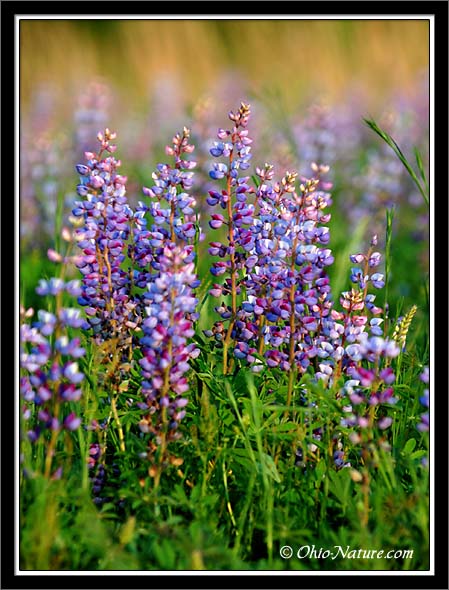Nutrition
The Karner blue has a different diet during its larvae stage in comparison to its adult
stage. The larva only eats wild lupine (Lupinus perennis) whereas the
adult Karner blues mainly feed on the nectar of a variety of different
flowering plants. Some adults have also been observed obtaining salts and
minerals by sipping on the water of moist ground, on human perspiration, as
well as some males feeding on animal droppings (Animal Diversity Web 2013).
Not only is the wild
lupine important in the nutrition and diet of the Karner blue larvae, but it
is the one plant that the Karner blue structures its whole life cycle around.
After the caterpillar hatches it will feed excessively on the wild
lupine for approximately three weeks. After three weeks the caterpillar will
pupate and later emerge as an adult butterfly. During the Karner blue’s
short lifespan as an adult it will mate as well as hatch eggs near the wild
lupines so that the hatching larva will be able to eat and survive (ehow
2013).
The abundance of wild
lupine has been greatly decreasing over the past years. Wild lupines depend
on Pine Barrens to grow. Years ago there was no shortage of Pine Barrens for
the wild lupines to habitate, but with the increase of deforestation there
is a lack of regions for the wild lupines to grow.
This decrease in wild lupines then causes a decrease in Karner blue
populations because there is not enough food to feed the larvae. The limited
food choice of the Karner blue larvae is one of the main reasons that the
species is currently nearing extinction at a rapid rate (U.S. Fish and
Wildlife Services 2012). The Karner blue’s diet is crucial to its survival
as a species and it is crucial that something is done to help decrease the
rate of pine barren loss and in turn increase the production of wild
lupines.
Observational studies
have been conducted in order to evaluate the types of wild lupines and
nectars that are preferred by the Karner blue. It was noticed that larvae
prefer to eat wild lupines which have longer, thicker stems as well as
larger leaves (Animal Diversity Web 2013). Not only was a preference
of vegetation noticed in the larvae but the adult Karner blue have also
shown patterns in their selection of nectar plant species. An
observational study conducted in Wisconsin found that the Karner blues feed
on as many as 36 different nectar producing plants. The researchers of this
study found that the adult butterfly of the Karner blue chooses its plants
based on abundance of flowers, location of
the plant in shade or sunshine, as well as color of the flowering plant. It
was found that plant species with the most flowers were selected 60% of the
time and that the butterflies were more likely to choose species that had
yellow or white petal coloring. It was also shown that male Karner blues prefer
plants that are in the open whereas adult females prefer plant species
that are nearer to shade. They also found that the abundance or
accessibility of a species of plant had no effect on the amount of times it
was selected by the adult butterflies. These studies not only showed
tendencies when it comes to plant type but it was also notices that
different broods (meaning the different times of the year that the butterfly
hatched) as well as the sex of the butterfly made a difference of the
likelihood of certain nectar producing plant species to be chosen (Grundel,
R., Pavlovic, N.B., and Sulzman, C.L. 2000).
These types of
observational studies are very useful because the information obtained can
help plan more productive and effective conservation management programs.
With the information of which nectar producing plant species an adult Karner
blue is likely to choose, those types of plant species can be strategically
grown in order to create an optimal feeding habitat for conservation of the Karner
blue species.
Click here to go back to the homepage.
